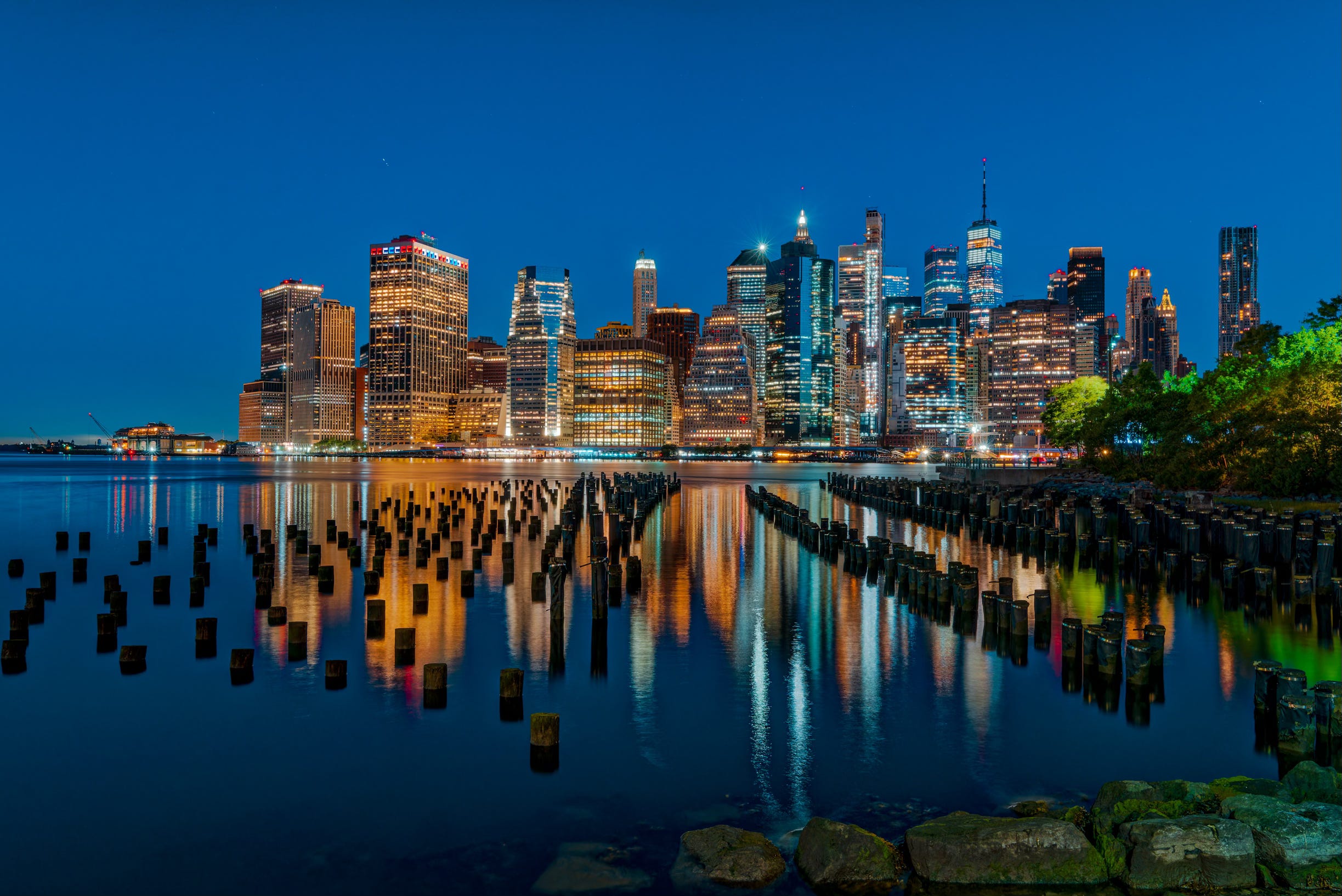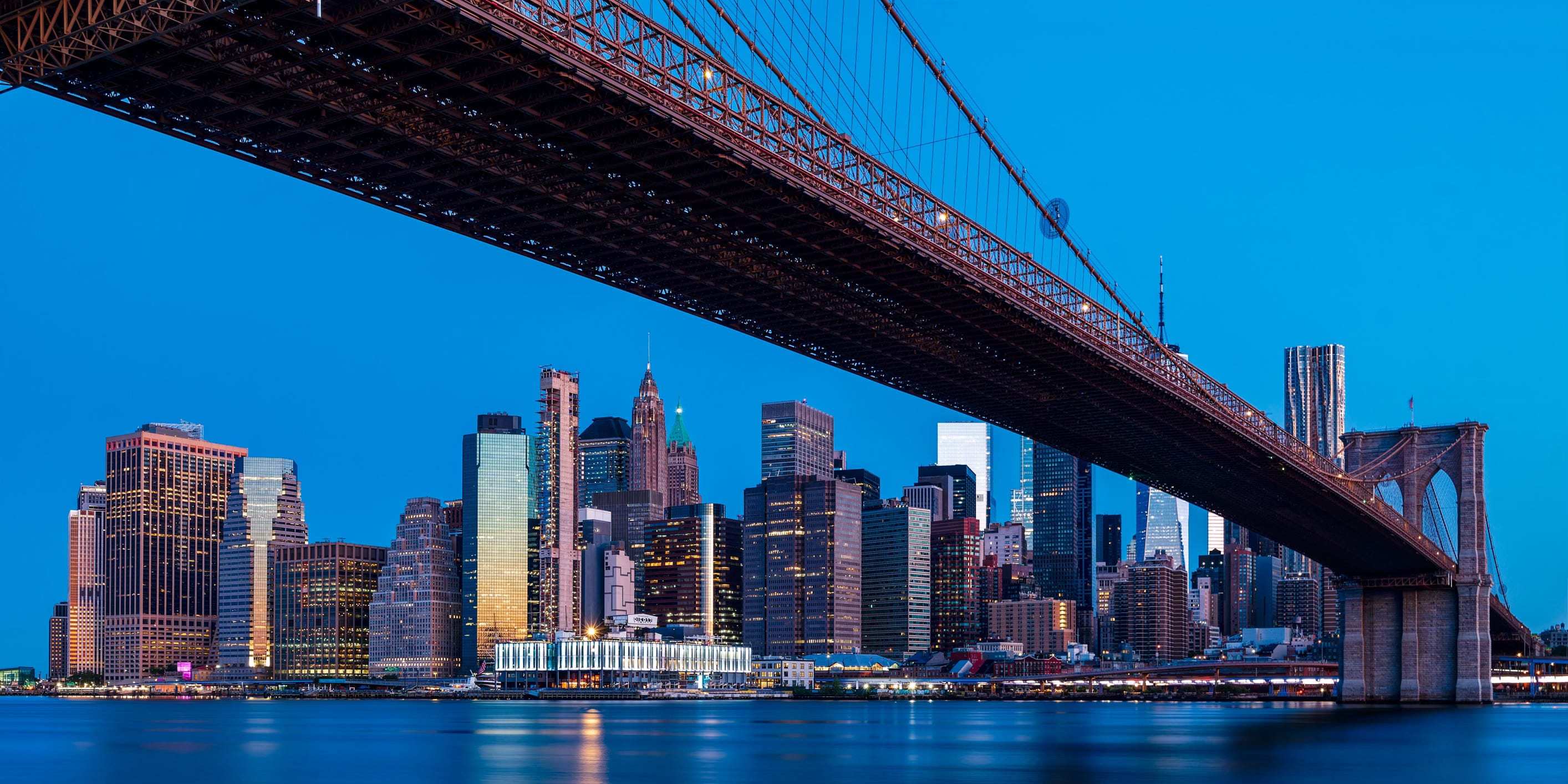Financial District, Manhattan, New York City - An iconic skyline, but is this how we plan our cities in the future?
The skyline is photogenic and the dream of Instagrammers, but is this what we need in a city?

Capturing this photo has always been a goal of mine, despite how mundane it may seem. The view of the morning blue hour in The Financial District has been captured countless times and shared across various media platforms, such as magazines, newspapers, and social media like Instagram.
However, this particular photo represents my unique perspective of the Manhattan skyline during Spring in New York City. The process of capturing this image and the memories associated with it are personal and significant to me.
While some may assume that taking this photo is simple, it actually requires some detective work to pinpoint the exact location. I have noticed a trend among photographers to keep their shooting locations private, likely stemming from traditional landscape photography practices.
However, I believe these arguments are outdated and antiquated. While it may have been possible to keep a location secret in the pre-internet era, the prevalence of high-speed internet and mobile phones in our daily lives makes it nearly impossible to hide a location from the public eye. While there may be a case for preserving a specific location in a rural setting, it becomes nonsensical when attempting to do so in an urban environment, especially when capturing the city skyline.
Today, there are numerous websites that provide detailed information on popular photo spots, and if that fails, one can turn to YouTube videos and Google Street View to uncover the exact location in Brooklyn.
My next task was to determine the timing of sunrise and the morning blue hour, as well as arrange transportation to Brooklyn from Manhattan early in the morning. As I weighed the options between taking the Subway for affordability or opting for a taxi, I came across enticing offers from ride-hailing companies. Ultimately, I chose to travel by cab at 4:30 am, as the entire fleet consisted of electric vehicles, which align with my sustainability principles. This decision also spared me the hassle of navigating the Subway during the early hours in Midtown Manhattan, making my way to the High Street Subway stop, and then walking to Brooklyn Bridge Park in the dark. Additionally, I saved valuable time by avoiding the reduced Subway service in the early morning and the extended travel time to reach my destination.
It was a clear morning with no clouds in the sky, allowing the Financial District of the Manhattan skyline to be showcased in all its glory. While it may not be the most energy-efficient practice, having the majority of office buildings illuminated creates a spectacular foreground and serves as the focal point of this photograph.
In terms of composition, this location offers the perfect balance between foreground, midground, and background. The main points of interest are undoubtedly the Manhattan skyline and its glittering lights against the backdrop of the morning blue sky. The midground features the East River and the reflections of the skyscrapers, which are typical elements of cityscape waterfront shots. However, the unique addition of timber stumps from the old pier in Brooklyn Bridge Park adds an interesting foreground. The uniform placement of these stumps creates leading lines that guide the viewer's focus towards the Manhattan skyline, enhancing the overall composition.

Critically speaking, the composition could have been more dramatic with the presence of clouds in the sky instead of a pure blue background. Nevertheless, I prefer this weather over a rainy, cloudy morning that could have hindered my ability to capture the skyline at all.
As I took several more photographs in the neighbourhood and headed back to my hotel, two thoughts came to mind. The first was regarding the safety considerations of traveling within the city during the early hours to capture a sunrise like the one I had just witnessed. The second thought revolved around the lessons we can glean from the Financial District in terms of the future of urban regeneration, placemaking, and the development of new cities and neighbourhoods.
The location of this photo shoot is a well-known spot in New York City. I had the means to travel there by taxi in the early hours of the morning. Despite the deserted nature of the location, I did not feel unsafe at any point during the shoot. However, it made me wonder if other female photographers would feel comfortable doing the same. The perception of crime and fear of harassment may deter women from traveling late at night or in the early hours of the day. As placemakers, how can we make the city more inclusive and equitable for everyone? The stunning morning blue hour sunrise of Manhattan should not be exclusive to a select few, predominantly male individuals, but should be enjoyed by all.
One important consideration is whether it is beneficial for urban development to have the most iconic part of Manhattan solely dedicated to office use. While I do not claim to be an expert on New York City, my perspective is informed by my experiences as a tourist, architect, and urbanist. The area is undeniably picturesque and impressive from afar, but is it the most efficient use of valuable city land? The vibrancy of the area diminishes significantly outside of office hours, raising questions about its overall vitality and diversity. A successful neighbourhood should strive for an 18-hour economy, where a variety of activities occur throughout the day, rather than being limited to a backdrop for evening photography or early morning commutes.
Undoubtedly, this is a multifaceted issue that cannot be fully explored in a single blog post. However, it prompts us to consider how we approach urban planning and development in the future. Shouldn't we draw lessons from past missteps and prioritise models that offer the most promise for the future of our cities?
Thank you for taking the time to read this. I would greatly appreciate it if you could provide any comments or feedback you may have. If you are finding this content enjoyable, why not share it with someone you know who may also find it interesting? Your support is truly valued.
My photographs are published on Instagram and online. Additionally, I am available for private commissions and collaborations with other organisations. Please do not hesitate to reach out to me for further inquiries or opportunities.



